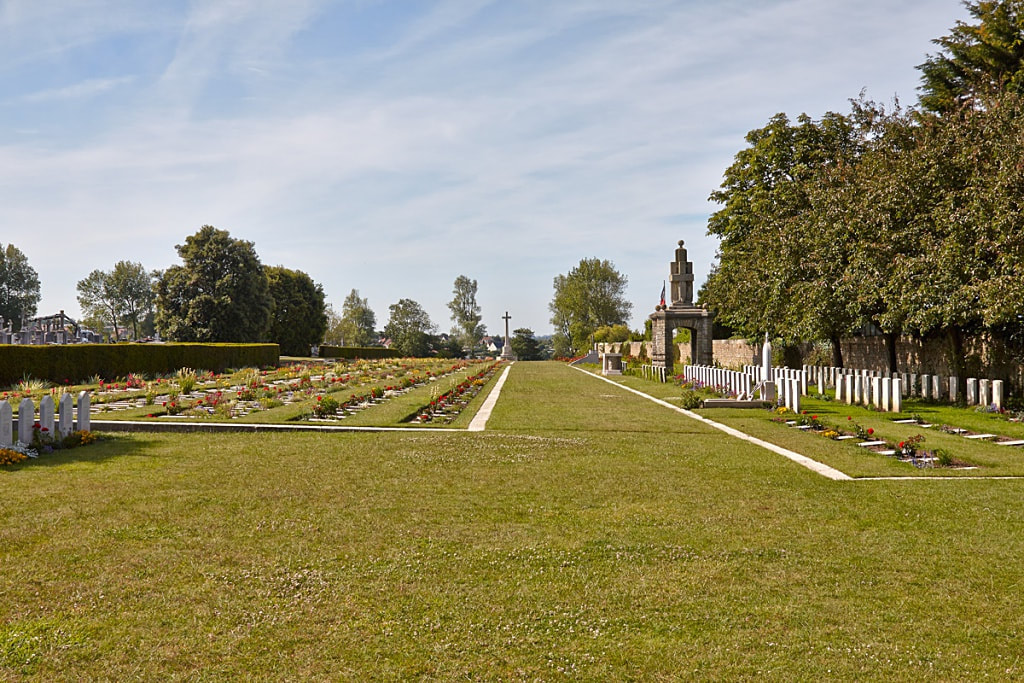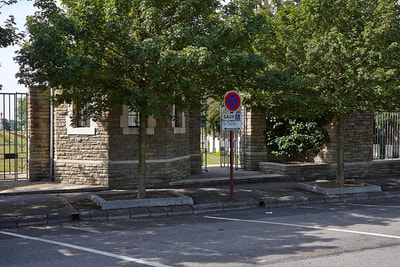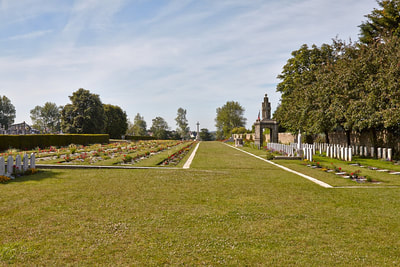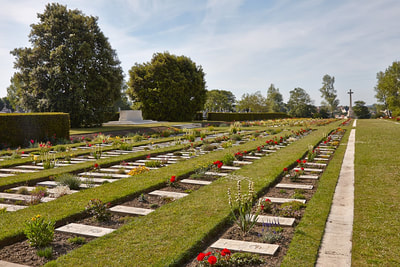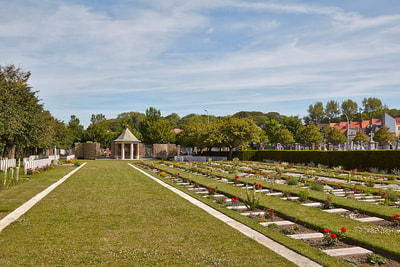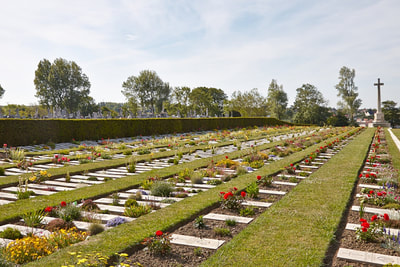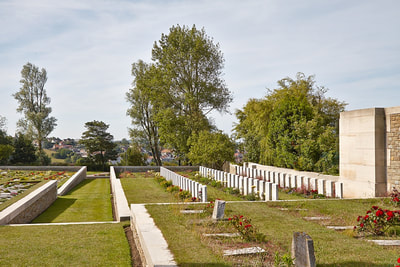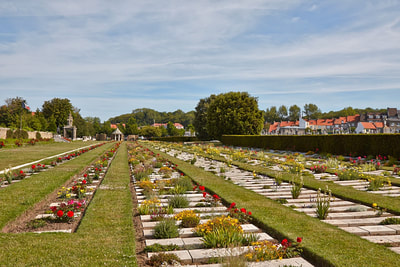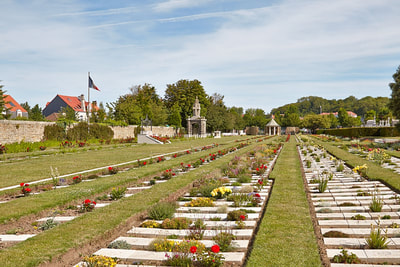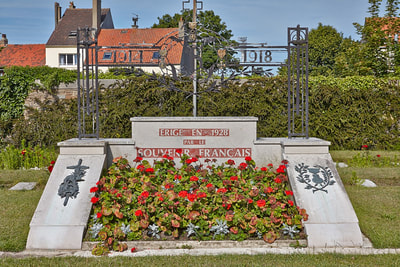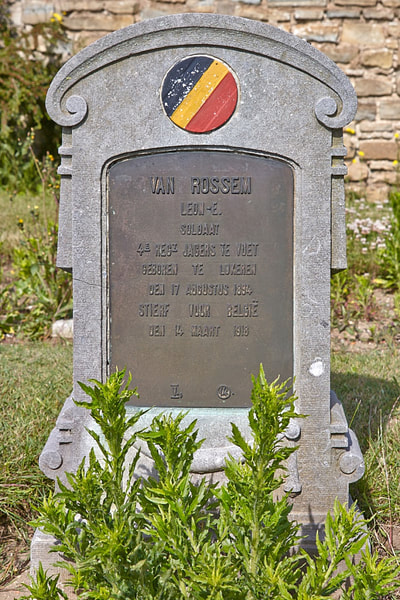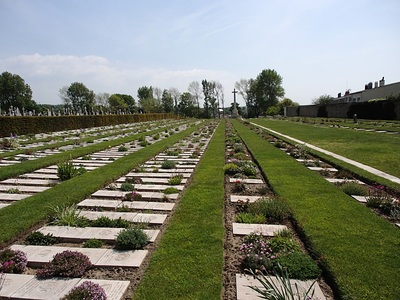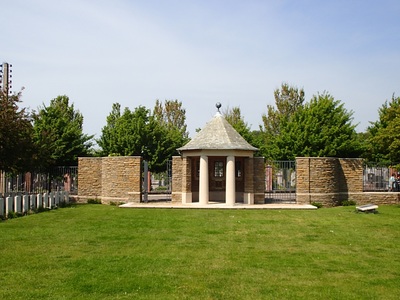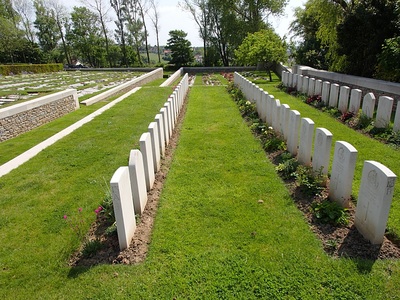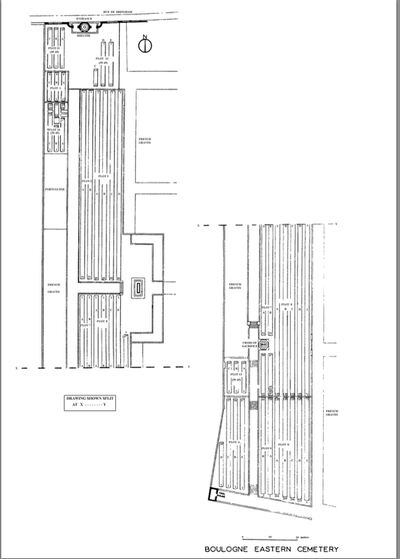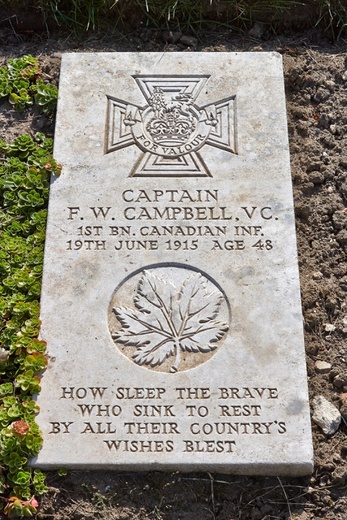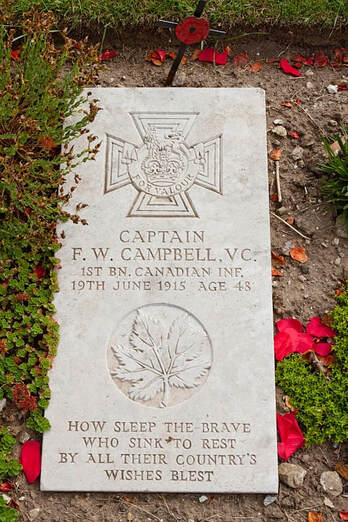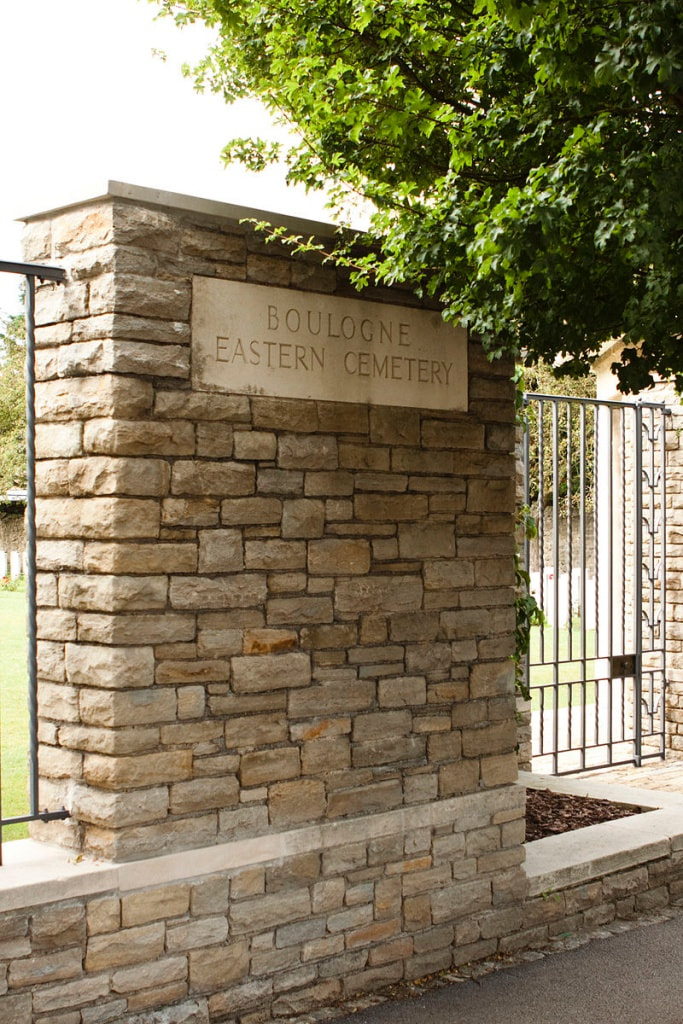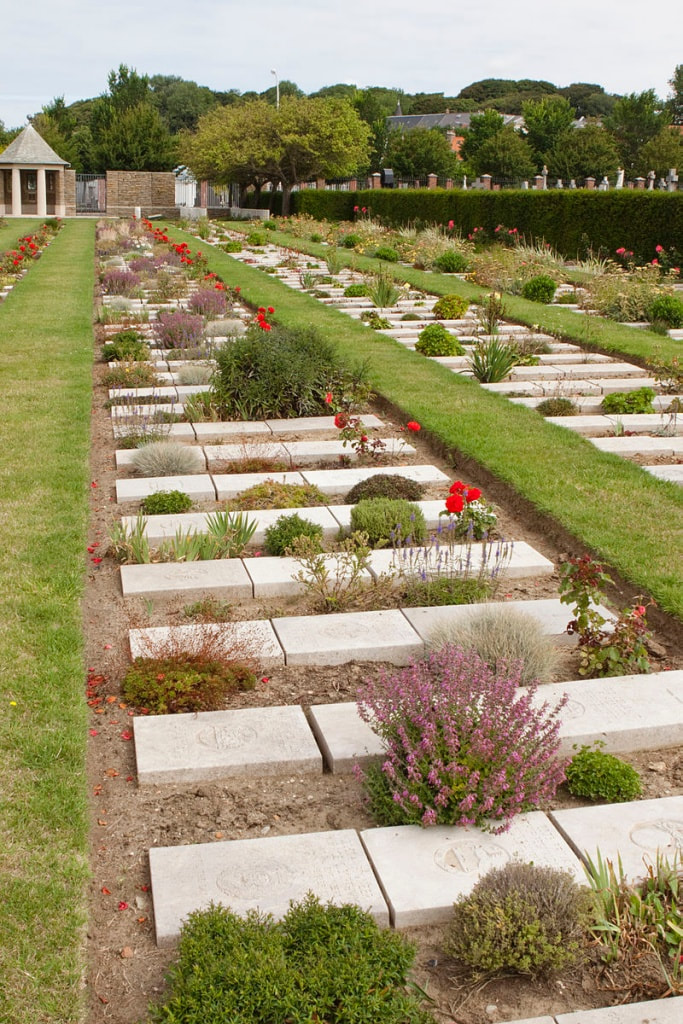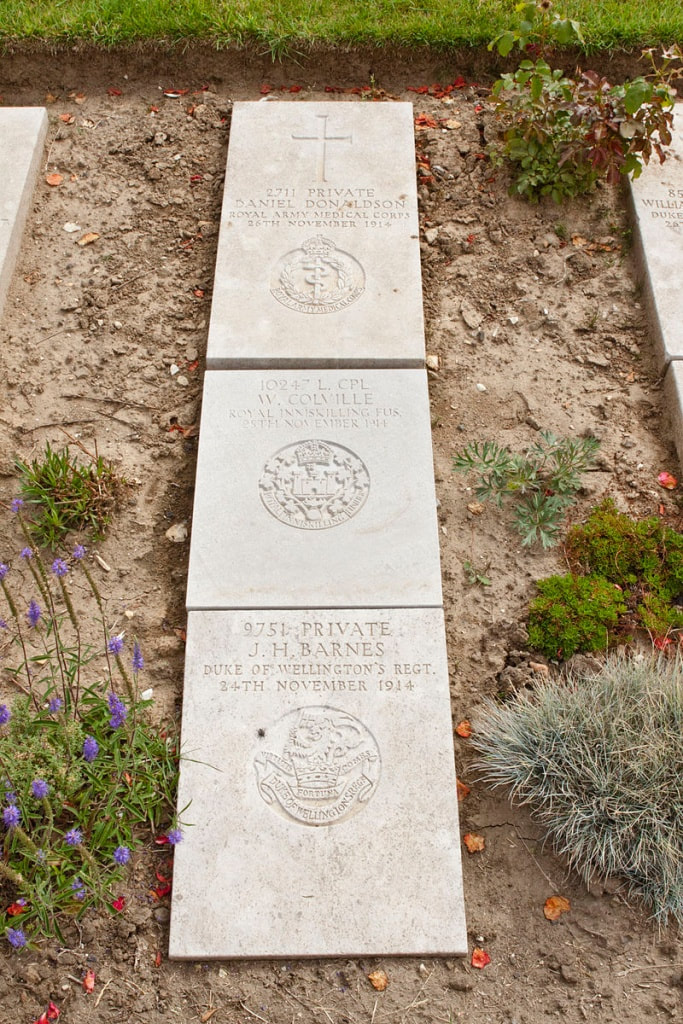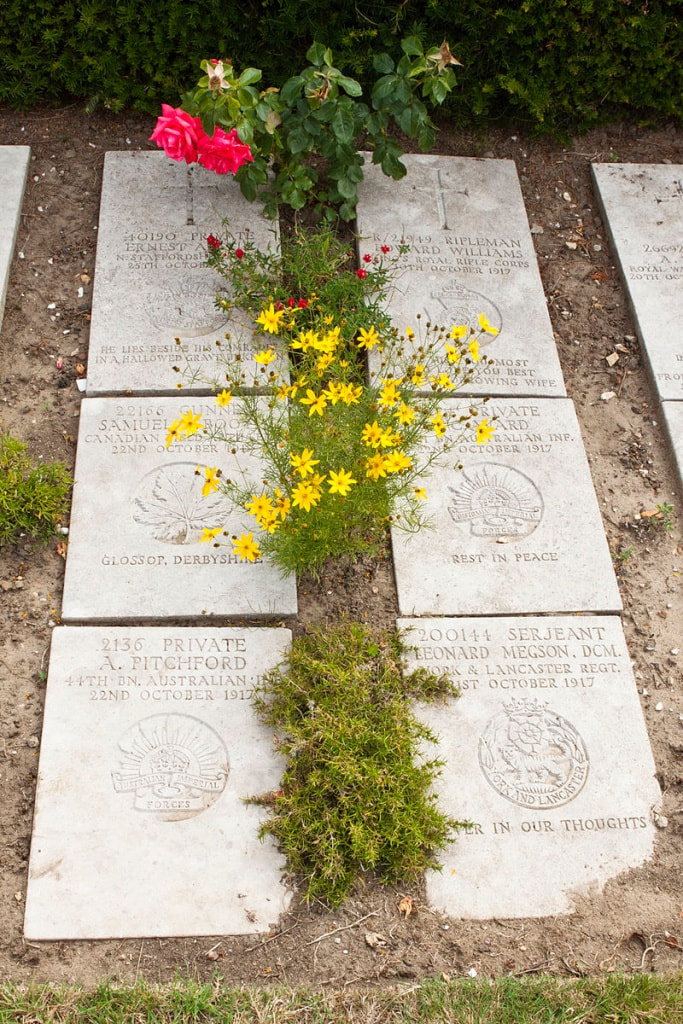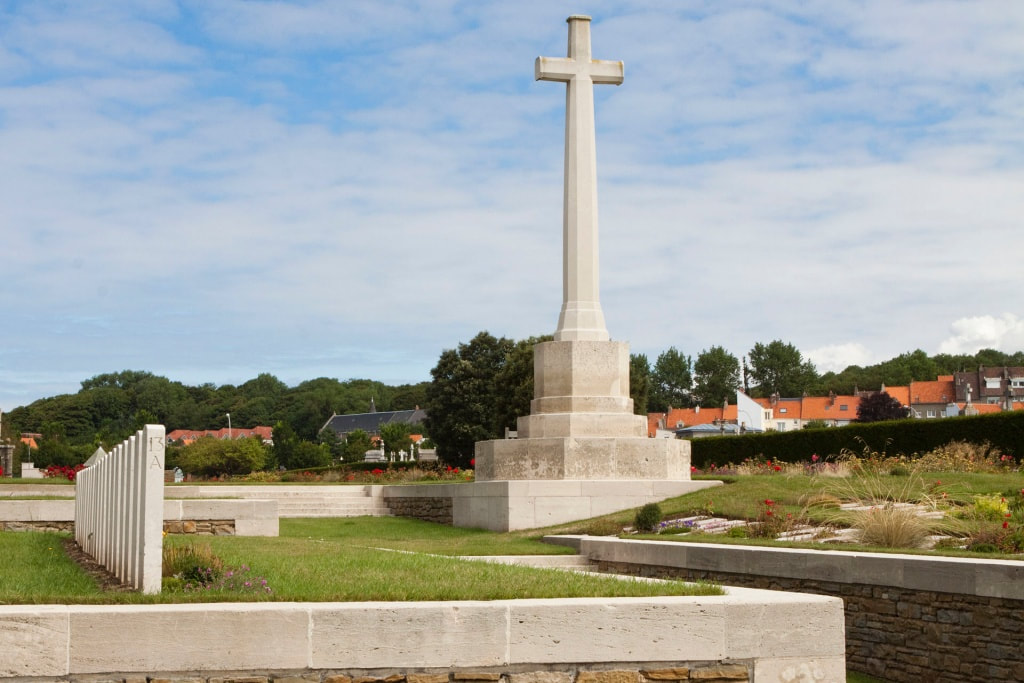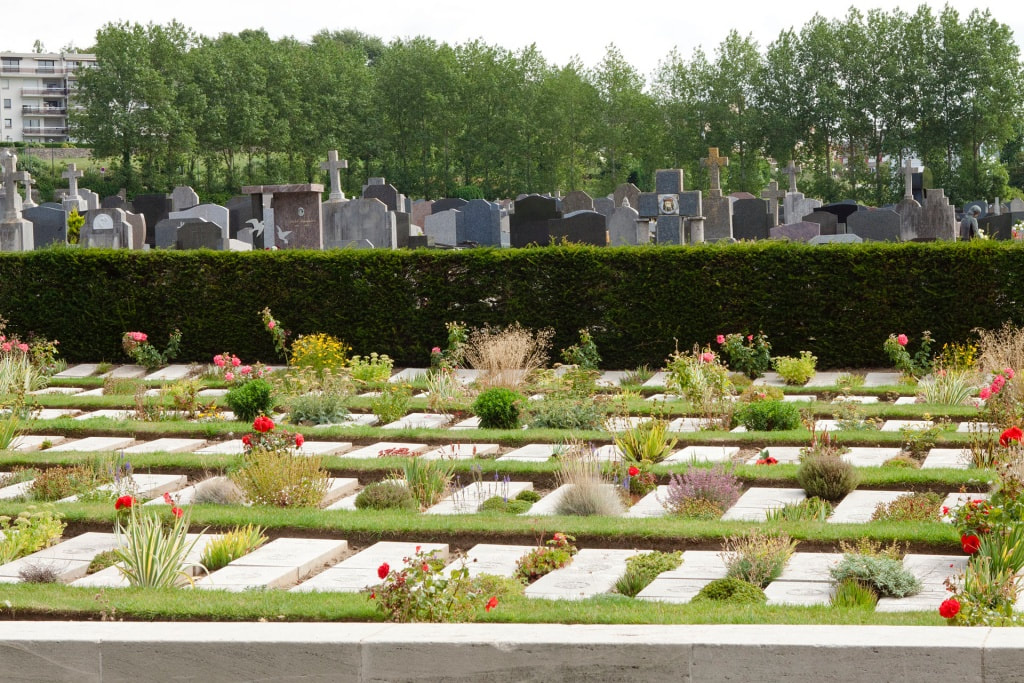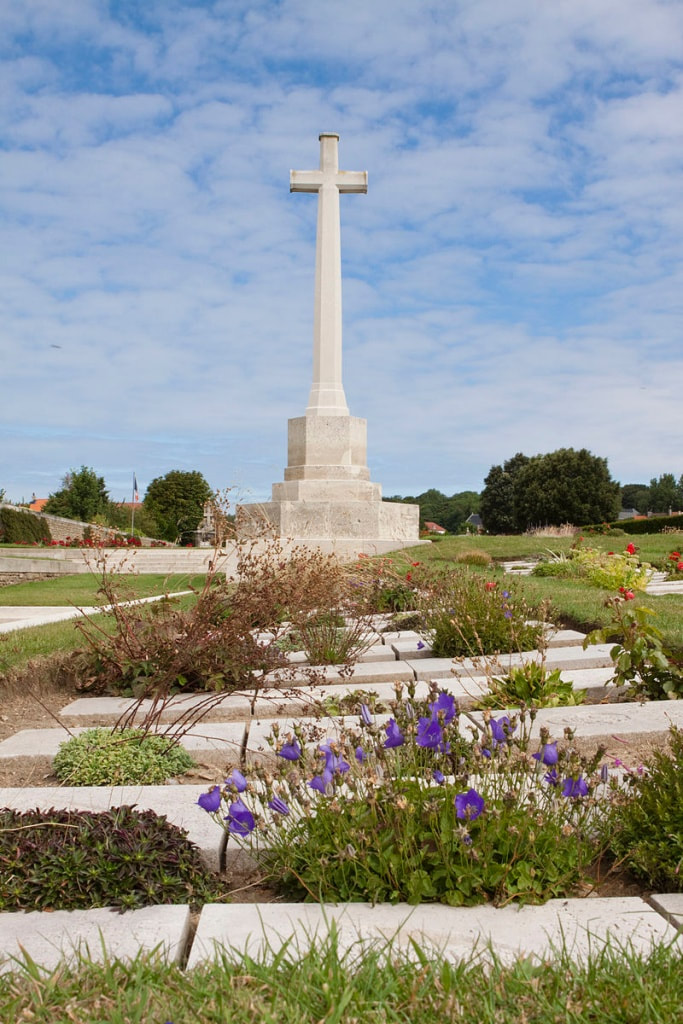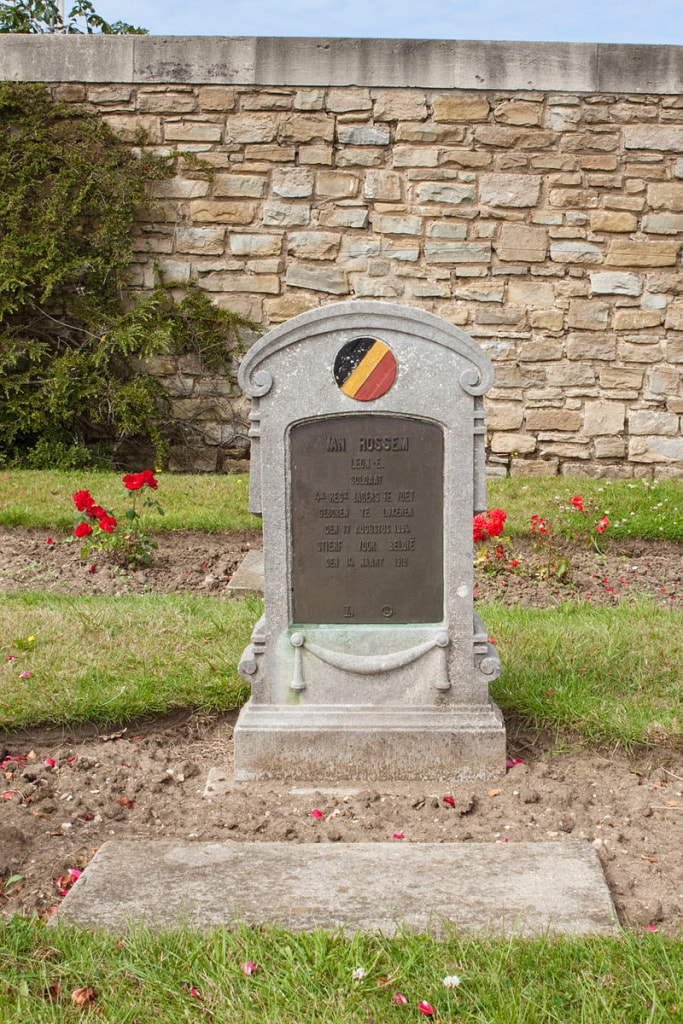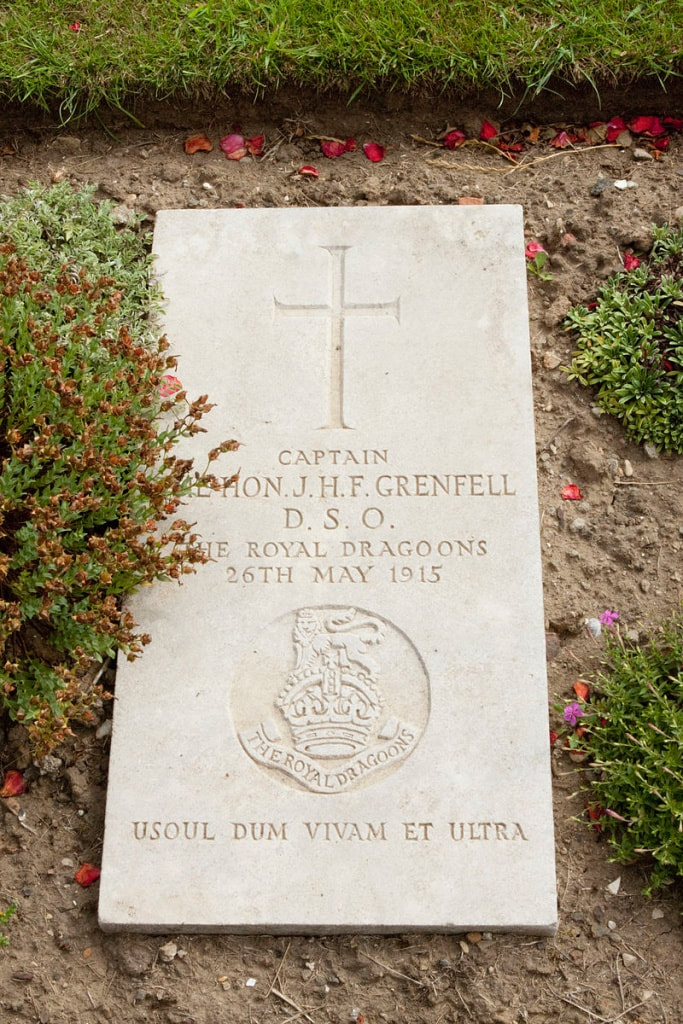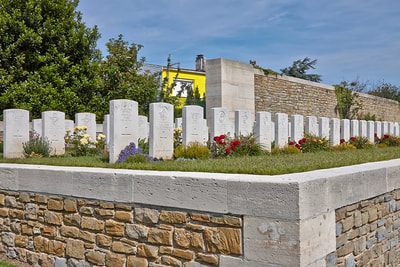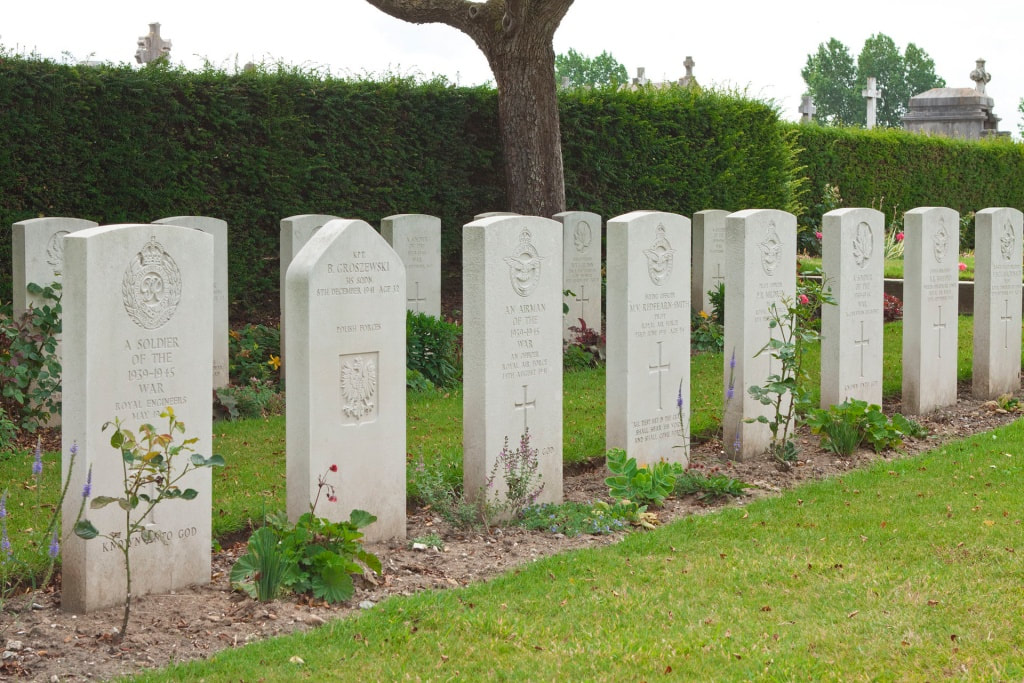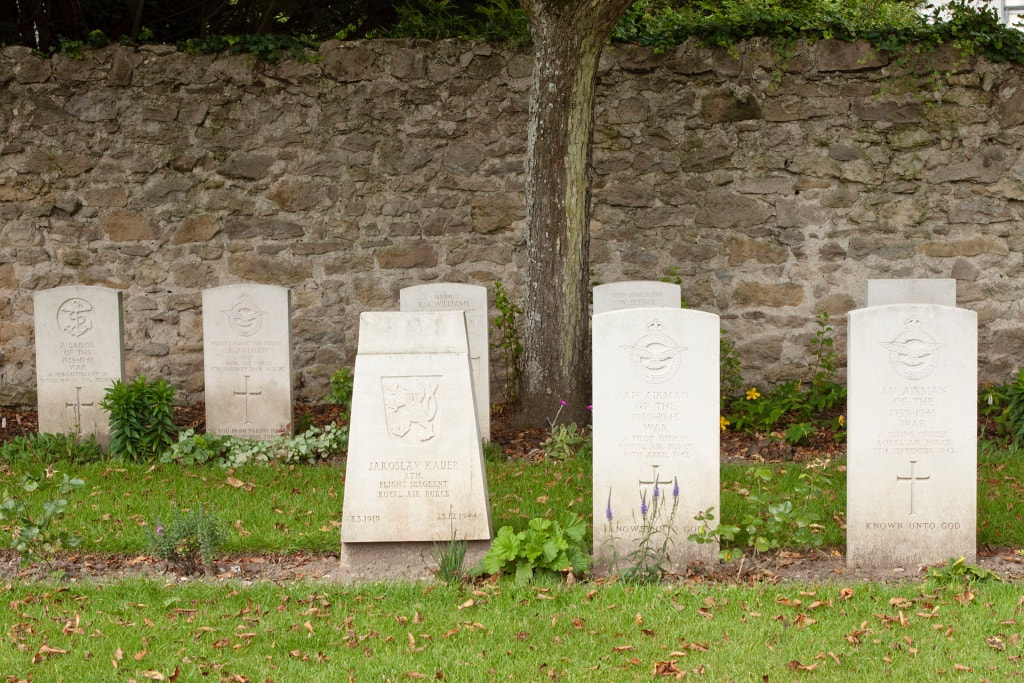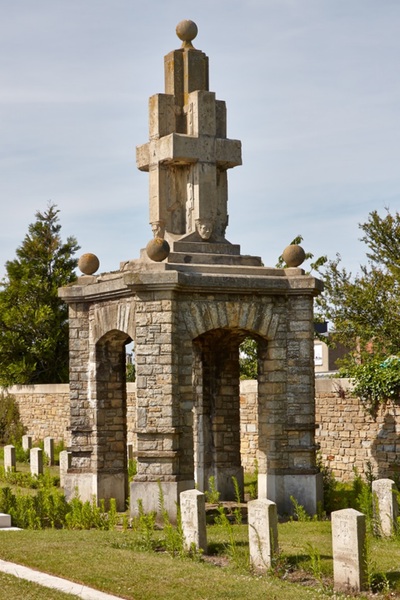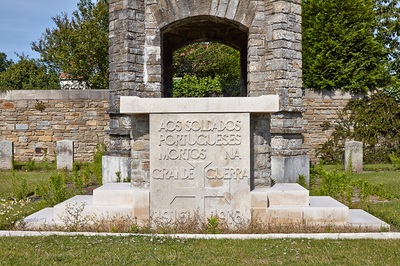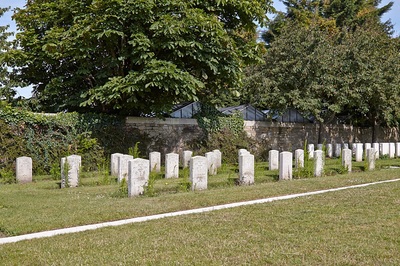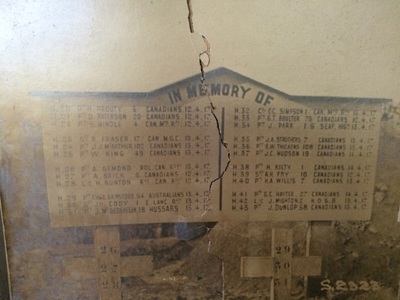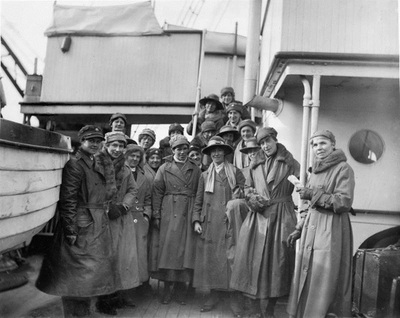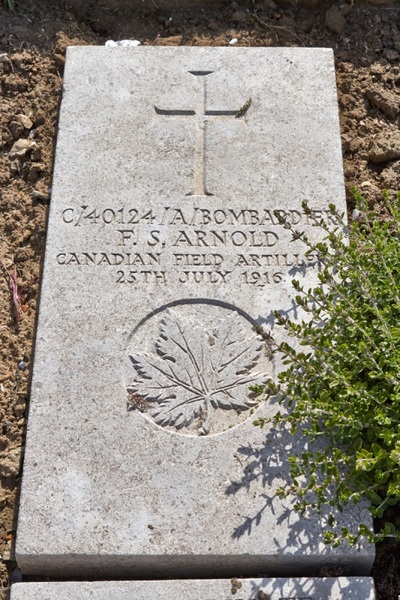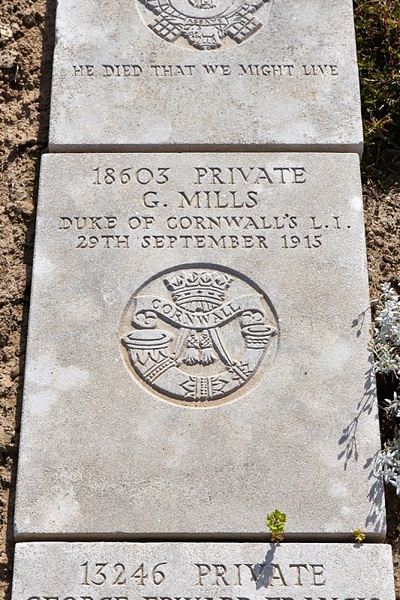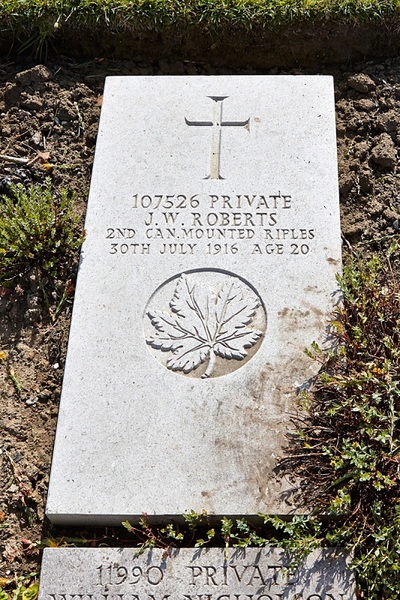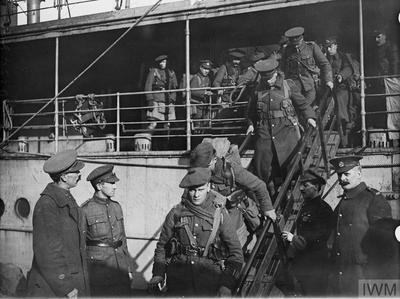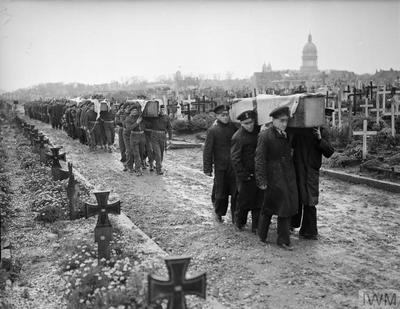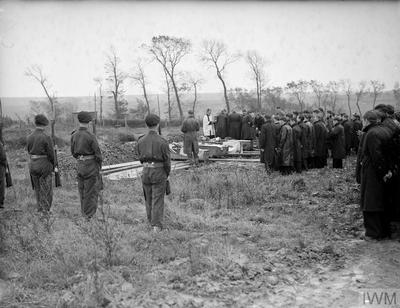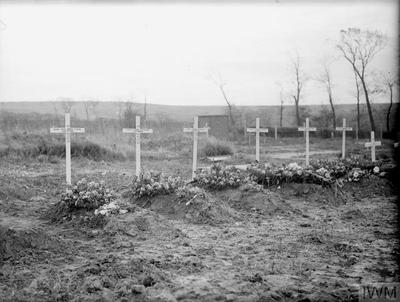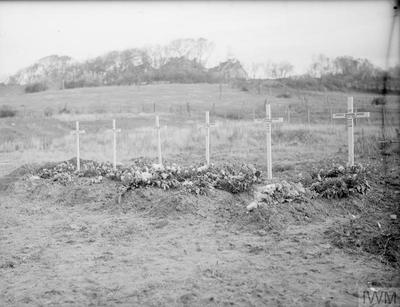BOULOGNE EASTERN CEMETERY
Pas De Calais
France
GPS Coordinates Latitude: 50.72484 Longitude: 1.62182
Roll of Honour
Location Information
Boulogne-sur-Mer is a large Channel port. Boulogne Eastern Cemetery, one of the town cemeteries, lies in the district of St Martin Boulogne, just beyond the eastern (Chateau) corner of the Citadel (Haute-Ville).
The cemetery is a large civil cemetery, split in two by the Rue de Dringhen, just south of the main road (RN42) to St Omer. The Commonwealth War Graves plot is located down the western edge of the southern section of the cemetery, with an entrance in the Rue de Dringhen. Unusually, the headstones are laid flat in this cemetery. This is due to the sandy soil. Car parking is available along the Rue de Dringhen.
Visiting Information
OPENING TIMES: This Cemetery is open 7 days a week, all year round.
From 1 October to 15 March: 08.00 - 18.00
From 16 March to 30 September: 08.00 - 19.00
Historical Information
Boulogne, was one of the three base ports most extensively used by the Commonwealth armies on the Western Front throughout the First World War. It was closed and cleared on the 27 August 1914 when the Allies were forced to fall back ahead of the German advance, but was opened again in October and from that month to the end of the war, Boulogne and Wimereux formed one of the chief hospital areas.
Until June 1918, the dead from the hospitals at Boulogne itself were buried in the Cimetiere de L'Est, one of the town cemeteries, the Commonwealth graves forming a long, narrow strip along the right hand edge of the cemetery. In the spring of 1918, it was found that space was running short in the Eastern Cemetery in spite of repeated extensions to the south, and the site of the new cemetery at Terlincthun was chosen.
During the Second World War, hospitals were again posted to Boulogne for a short time in May 1940. The town was taken by the Germans at the end of that month and remained in their hands until recaptured by the Canadians on 22 September 1944.
Boulogne Eastern Cemetery contains 5,583 Commonwealth burials of the First World War and 224 from the Second World War.
Identified World War One Burials: United Kingdom 4,740, Canada 442, Australia 307, New Zealand 74, South Africa 15, India 5. Total 5,583.
Identified World War Two Burials: United Kingdom 164, Canada, 17, Poland 11, Australia 3. Total 195.
The Commonwealth plots were designed by Charles Holden and William Harrison Cowlishaw
Boulogne-sur-Mer is a large Channel port. Boulogne Eastern Cemetery, one of the town cemeteries, lies in the district of St Martin Boulogne, just beyond the eastern (Chateau) corner of the Citadel (Haute-Ville).
The cemetery is a large civil cemetery, split in two by the Rue de Dringhen, just south of the main road (RN42) to St Omer. The Commonwealth War Graves plot is located down the western edge of the southern section of the cemetery, with an entrance in the Rue de Dringhen. Unusually, the headstones are laid flat in this cemetery. This is due to the sandy soil. Car parking is available along the Rue de Dringhen.
Visiting Information
OPENING TIMES: This Cemetery is open 7 days a week, all year round.
From 1 October to 15 March: 08.00 - 18.00
From 16 March to 30 September: 08.00 - 19.00
Historical Information
Boulogne, was one of the three base ports most extensively used by the Commonwealth armies on the Western Front throughout the First World War. It was closed and cleared on the 27 August 1914 when the Allies were forced to fall back ahead of the German advance, but was opened again in October and from that month to the end of the war, Boulogne and Wimereux formed one of the chief hospital areas.
Until June 1918, the dead from the hospitals at Boulogne itself were buried in the Cimetiere de L'Est, one of the town cemeteries, the Commonwealth graves forming a long, narrow strip along the right hand edge of the cemetery. In the spring of 1918, it was found that space was running short in the Eastern Cemetery in spite of repeated extensions to the south, and the site of the new cemetery at Terlincthun was chosen.
During the Second World War, hospitals were again posted to Boulogne for a short time in May 1940. The town was taken by the Germans at the end of that month and remained in their hands until recaptured by the Canadians on 22 September 1944.
Boulogne Eastern Cemetery contains 5,583 Commonwealth burials of the First World War and 224 from the Second World War.
Identified World War One Burials: United Kingdom 4,740, Canada 442, Australia 307, New Zealand 74, South Africa 15, India 5. Total 5,583.
Identified World War Two Burials: United Kingdom 164, Canada, 17, Poland 11, Australia 3. Total 195.
The Commonwealth plots were designed by Charles Holden and William Harrison Cowlishaw
Cemetery images in this gallery © Geerhard Joos

Captain Frederick William Campbell V. C.
1st Bn. Canadian Infantry (Western Ontario Regiment), died of wounds 19th June 1915, aged 48. Plot II. A. 24.
Only son of Ephraim B. and Esther A. Hunt Campbell, of Mount Forest; husband of Margaret Annie Campbell, of Mount Forest, Ontario. Served in the South African War.
Citation: An extract from the London Gazette, No. 29272, dated 20th Aug., 1915, records the following:-For most conspicuous bravery on 15th June, 1915, during the action at Givenchy. Lt. Campbell took two machine-guns over the parapet, arrived at the German first line with one gun, and maintained his position there, under very heavy rifle, machine-gun and bomb fire, notwithstanding the fact that almost the whole of his detachment had then been killed or wounded. When our supply of bombs had become exhausted, this Officer advanced his gun still further to an exposed position, and, by firing about 1,000 rounds, succeeded in holding back the enemy's counter-attack. This very gallant Officer was subsequently wounded, and has since died.
1st Bn. Canadian Infantry (Western Ontario Regiment), died of wounds 19th June 1915, aged 48. Plot II. A. 24.
Only son of Ephraim B. and Esther A. Hunt Campbell, of Mount Forest; husband of Margaret Annie Campbell, of Mount Forest, Ontario. Served in the South African War.
Citation: An extract from the London Gazette, No. 29272, dated 20th Aug., 1915, records the following:-For most conspicuous bravery on 15th June, 1915, during the action at Givenchy. Lt. Campbell took two machine-guns over the parapet, arrived at the German first line with one gun, and maintained his position there, under very heavy rifle, machine-gun and bomb fire, notwithstanding the fact that almost the whole of his detachment had then been killed or wounded. When our supply of bombs had become exhausted, this Officer advanced his gun still further to an exposed position, and, by firing about 1,000 rounds, succeeded in holding back the enemy's counter-attack. This very gallant Officer was subsequently wounded, and has since died.
Images in this gallery © Werner Van Caneghem
World War Two Graves
Pictures © Geerhard Joos & Werner Van Caneghem
Pictures of Portuguese Graves below © Geerhard Joos
Shot at Dawn
C/40124 Lance Bombardier Frederick S. Arnold, 1st Brigade, Canadian Field Artillery, executed for desertion 25th July 1916, aged 26. 1916. Plot VIII. A. 137.
An American, with previous service in the US Army, he deserted from the savage fighting in the Ypres Salient. Arnold was arrested in civilian clothes in Boulogne, where he was tried instead of — as was the norm — being first returned to his unit. As a result, his service record was not produced to the court that condemned him. (Putkowski, p 94).
18603 Private George Mills, 2nd Bn. Duke of Cornwall's Light Infantry, executed for desertion 29th September 1915, aged 21. Plot VIII. B. 81. Son of Mrs. Pilling, of 142, Mortlake Rd., Prince Regent's Lane, Custom House, London.
He enlisted as a Regular on 24 Feb 1915, arriving in France on 8 March, & took up duties in May as an officer’s servant for Lieut Martin. On the morning of 1 Aug, Mills went missing, taking with him some cheques belonging to 2 of the officers, & a watch borrowed from a comrade. Next day, he presented himself at the APM’s office in Boulogne, dressed as a Second Lieutenant. Mills gave a false name & sought a leave pass for England, giving an implausible account of how he had lost his pocket-book when cycling. He was asked to return the next day, & his battalion was contacted. Meanwhile, Mills attempted to cash a cheque for £8 at the Boulogne branch of Cox’s Bank. On the cashier refusing to pay out such a large sum, Briggs changed the amount to £5, signing the cheque in the name of Martin. An attempt the next day to cash another cheque for £5 in the name of Battersby resulted in Mills being escorted to the APM’s office — where he promptly made, unsuccessfully, an attempt to decamp.
In Sept 1915, he was tried for desertion; stealing from officers & from a comrade; & forgery. Mills tried to defend himself by saying that other officers’ servants were always drunk & fighting, & that he suddenly decided to run away. He thought that Lieut Martin would forgive him about the cheques & stop the money out of his pay; & said that he intended to go home only for a few days, since, unlike all other servants, he had been granted no leave.
After conviction on all charges, his CO made it clear that since Mills had never seen action, having done very little work in the front trench-line, his character — otherwise good — could not be judged from a fighting point of view. The Brigade commander wrote that Mills ‘knew very well what he was about’. (Corns, pp. 242-244)
107526 Private John William Roberts, 2nd Bn. Canadian Mounted Rifles, executed for desertion 30th July 1916,aged 20. Plot VIII. A. 154.
A volunteer, he deserted, thus avoiding fighting with his battalion in the Ypres Salient. Roberts lived for several months with a woman in Boulogne, where he was arrested, seemingly because he had regularly drawn his pay from the Base Cashier ! (Putkowski,l p. 98)
26/626 Lance Corporal Jesse Robert Short, 24th(Tyneside Irish) Bn. Northumberland Fusiliers, executed for mutiny 4th October 1917, aged 30. Plot VIII. I. 43. Son of William and Margaret Elinor Short; husband of Dinah Short, of 11, Parkinson St., Felling, Co., Durham.
In the evening of 11 Sept 1917 — the third day of the serious disturbances at the huge base depot at Etaples — 70-80 men together sought to force their way past the picket that guarded the bridge over the River Canche, that gave access to the out-of-bounds town. When the picket commander sought to take control of the situation, Short emerged from the crowd & told the picket not to listen to the officer; & suggested that a stone be put round his neck, & he be thrown into the river. One of the bridge sentries put it that Short said: ‘Fuck him — if we want to to rush the bridge picket, we will rush it’.
Short moved on, the officer concerned detailing an NCO & 4 men to arrest Short if he came back. He did, & was arrested.
At trial the next day, Short said that he had been drunk, but several witnesses believed that he was lucid.
Haig confirmed the sentence of death on 30 Sept. Of the 50 or so men court-martialled at Etaples, only 4 were charged with mutiny, & Lance Corporal Short was the only man to be executed.
(Corns, pp 382, 392-4; see Putkowski, pp.200-202 for a full account of Short’s earlier civilian life, & military career previous to his arrival in France in Jan 1916) ‘See also Scott, Michael: Scapegoats, 2013, Chapter 6 for a substantial account of the role of, & conditions at the Etaples Base Camp prior to the mutiny; & Plate XIII for a photo of the document recording Short’s Pardon under the 2006 Act’.
Pictures of Shot at Dawn Graves © Geerhard Joos
C/40124 Lance Bombardier Frederick S. Arnold, 1st Brigade, Canadian Field Artillery, executed for desertion 25th July 1916, aged 26. 1916. Plot VIII. A. 137.
An American, with previous service in the US Army, he deserted from the savage fighting in the Ypres Salient. Arnold was arrested in civilian clothes in Boulogne, where he was tried instead of — as was the norm — being first returned to his unit. As a result, his service record was not produced to the court that condemned him. (Putkowski, p 94).
18603 Private George Mills, 2nd Bn. Duke of Cornwall's Light Infantry, executed for desertion 29th September 1915, aged 21. Plot VIII. B. 81. Son of Mrs. Pilling, of 142, Mortlake Rd., Prince Regent's Lane, Custom House, London.
He enlisted as a Regular on 24 Feb 1915, arriving in France on 8 March, & took up duties in May as an officer’s servant for Lieut Martin. On the morning of 1 Aug, Mills went missing, taking with him some cheques belonging to 2 of the officers, & a watch borrowed from a comrade. Next day, he presented himself at the APM’s office in Boulogne, dressed as a Second Lieutenant. Mills gave a false name & sought a leave pass for England, giving an implausible account of how he had lost his pocket-book when cycling. He was asked to return the next day, & his battalion was contacted. Meanwhile, Mills attempted to cash a cheque for £8 at the Boulogne branch of Cox’s Bank. On the cashier refusing to pay out such a large sum, Briggs changed the amount to £5, signing the cheque in the name of Martin. An attempt the next day to cash another cheque for £5 in the name of Battersby resulted in Mills being escorted to the APM’s office — where he promptly made, unsuccessfully, an attempt to decamp.
In Sept 1915, he was tried for desertion; stealing from officers & from a comrade; & forgery. Mills tried to defend himself by saying that other officers’ servants were always drunk & fighting, & that he suddenly decided to run away. He thought that Lieut Martin would forgive him about the cheques & stop the money out of his pay; & said that he intended to go home only for a few days, since, unlike all other servants, he had been granted no leave.
After conviction on all charges, his CO made it clear that since Mills had never seen action, having done very little work in the front trench-line, his character — otherwise good — could not be judged from a fighting point of view. The Brigade commander wrote that Mills ‘knew very well what he was about’. (Corns, pp. 242-244)
107526 Private John William Roberts, 2nd Bn. Canadian Mounted Rifles, executed for desertion 30th July 1916,aged 20. Plot VIII. A. 154.
A volunteer, he deserted, thus avoiding fighting with his battalion in the Ypres Salient. Roberts lived for several months with a woman in Boulogne, where he was arrested, seemingly because he had regularly drawn his pay from the Base Cashier ! (Putkowski,l p. 98)
26/626 Lance Corporal Jesse Robert Short, 24th(Tyneside Irish) Bn. Northumberland Fusiliers, executed for mutiny 4th October 1917, aged 30. Plot VIII. I. 43. Son of William and Margaret Elinor Short; husband of Dinah Short, of 11, Parkinson St., Felling, Co., Durham.
In the evening of 11 Sept 1917 — the third day of the serious disturbances at the huge base depot at Etaples — 70-80 men together sought to force their way past the picket that guarded the bridge over the River Canche, that gave access to the out-of-bounds town. When the picket commander sought to take control of the situation, Short emerged from the crowd & told the picket not to listen to the officer; & suggested that a stone be put round his neck, & he be thrown into the river. One of the bridge sentries put it that Short said: ‘Fuck him — if we want to to rush the bridge picket, we will rush it’.
Short moved on, the officer concerned detailing an NCO & 4 men to arrest Short if he came back. He did, & was arrested.
At trial the next day, Short said that he had been drunk, but several witnesses believed that he was lucid.
Haig confirmed the sentence of death on 30 Sept. Of the 50 or so men court-martialled at Etaples, only 4 were charged with mutiny, & Lance Corporal Short was the only man to be executed.
(Corns, pp 382, 392-4; see Putkowski, pp.200-202 for a full account of Short’s earlier civilian life, & military career previous to his arrival in France in Jan 1916) ‘See also Scott, Michael: Scapegoats, 2013, Chapter 6 for a substantial account of the role of, & conditions at the Etaples Base Camp prior to the mutiny; & Plate XIII for a photo of the document recording Short’s Pardon under the 2006 Act’.
Pictures of Shot at Dawn Graves © Geerhard Joos

